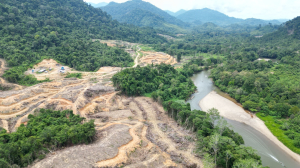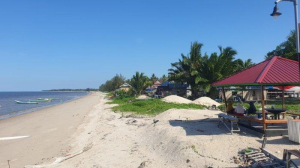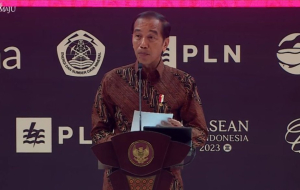Kayan cascade hydropower project advances despite major setbacks
The Kayan Cascade hydropower project in Bulungan Regency, North Kalimantan, continues to progress despite facing significant setbacks, including the recent withdrawal of key international partners PowerChina and Sumitomo.
The US$17.8 billion (Rp291 trillion) project, led by PT Kayan Hydro Energy (KHE), aims to construct five dams along the Kayan River, representing Southeast Asia's largest hydropower initiative. Upon completion, the project is expected to generate up to 9,000 megawatts of electricity, supporting Indonesia's energy strategy and the development of the new national capital in East Kalimantan.
KHE's Director of Operations, Sapta Nugraha, affirmed the company's commitment to the project, despite the exit of PowerChina and Sumitomo.
"While there were many challenges, the project is still on track. We continue to work toward achieving the expected progress, while remaining open to partnerships to strengthen and maximize the added value of this project," Sapta said as quoted by BenarNews on Sunday, June 16, 2024.
PowerChina's departure was attributed to pandemic-related travel restrictions that hindered on-site work, while Sumitomo's withdrawal was reported by Nikkei Asia on May 31.
Despite these setbacks, KHE is optimistic about completing the project independently if necessary, and is actively seeking new partners, including potential investors from Japan and China.
"The Kayan River has great potential and is a key asset in achieving our net-zero emissions goals," Agus Cahyono Adi, a spokesperson for the Ministry of Energy and Mineral Resources (ESDM), said.
Agus is hopeful that KHE will soon secure new investor partners to realize its development targets.
While the central government's support for the project remains uncertain, KHE continues to advance construction efforts. The company has been focusing on building infrastructure for the first dam, including access roads and a diversion channel to temporarily reroute the river.
However, the project's progress has not been without challenges. Local residents in Long Peso have expressed concerns over noise, dust, and water contamination caused by the construction activities. Village head Pulinop Jaui reported that blasting activities have polluted the village's water source, prompting calls for the relocation of clean water sources.
Sapta acknowledged the strategic importance of the project, which will provide green energy for major national initiatives, including the new capital city, Nusantara, and an industrial zone in North Kalimantan.
Despite skepticism from experts like energy economist Yayan Satyakti about the project's timeline, KHE remains committed to meeting its target completion by 2029.
Yayan said that the land acquisition process has been ongoing for a relatively long time. In hydropower projects, this is the most crucial aspect, and it should have been completed before the project was offered to investors.
Environmentalists have also raised concerns about the relocation plans for affected communities, urging KHE to provide alternative livelihoods before displacing residents.
As KHE navigates these challenges, the company remains focused on securing new partnerships and advancing the Kayan Cascade project, which holds significant potential for Indonesia's renewable energy future.
Tag
Already have an account? Sign In
-
Start reading
Freemium
-
Monthly Subscription
30% OFF$26.03
$37.19/MonthCancel anytime
This offer is open to all new subscribers!
Subscribe now -
Yearly Subscription
33% OFF$228.13
$340.5/YearCancel anytime
This offer is open to all new subscribers!
Subscribe now






